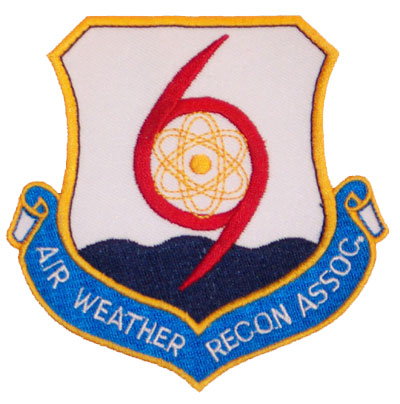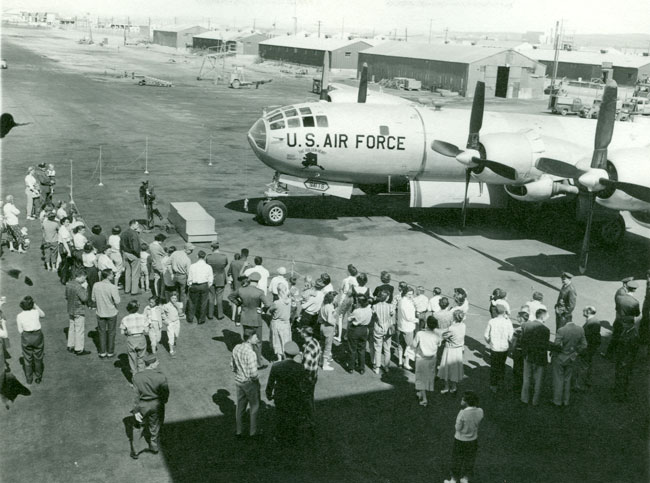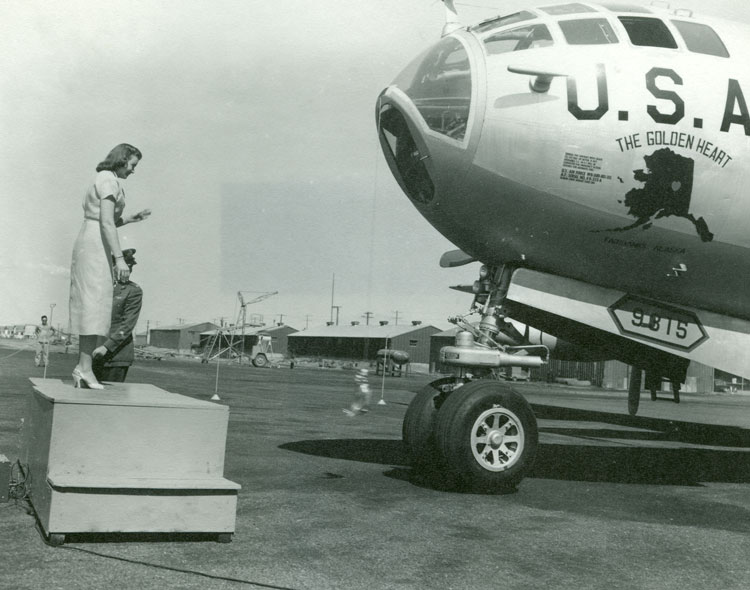
 |
REMEMBERING THE CREW OF "THE GOLDEN
HEART"
|
50 Years Ago - 31 August 1956
The First Major Air Weather Service Accident
Involving the "New" WB-50D Occurred
 |
Official
Air Force photograph, courtesy of Air
Force Weather History Office
|
| The aircraft
involved was tail number 49-315. This converted SAC bomber was
one of the first WB-50s to arrive in Alaska at the 58th Weather
Reconnaissance Squadron. It flew its first operational weather
flight in early June of 1956. On Saturday, 9 June 1956, the plane
was christened "The Golden
Heart". It was named after the nearby city of Fairbanks,
Alaska. Fairbanks was proud to be known as the Golden Heart of Alaska. Most of the 58th WRS families gathered in the squadron briefing room that June morning. Lt Col Carl Morales, the Commander of the 58th, welcomed the guests, which included Fairbanks Mayor Douglas Preston; Mr. Dudley Beck, the President of the Fairbanks Chamber of Commerce; and Mr. "Dutch" Derr, the Chamber Manager. After Colonel Morales' remarks, the various squadron section heads explained what their sections did. The entire group then proceeded to the Birchwood Hanger for the christening ceremony. Mrs. Marilyn Barnett, the reigning "Mrs. Eielson AFB" and "Mrs. Fairbanks" did the honors. Standing on a special platform, she released a bottle of champagne, which swung down to break against the nose landing gear of the "Golden Heart". |
 |
|
Official Air Force photograph, courtesy of Air Force Weather History Office |
| By 1956,
weather reconnaissance already had an extensive history in
Alaska. The first post World War II squadron to be equipped with
the B-29 was the 59th Reconnaissance Squadron (VLR) Weather. The
59th moved to Ladd Field, AK in 1947. In March of that year, the
squadron flew the first "Ptarmigan" weather mission to the North
Pole. In October of 1947, the 59th was "replaced" by the 375th
Recon Sq (VLR) Wea, and in Feb 1951, the squadron became the 58th
Strategic Reconnaissance Squadron, Medium, Weather. In 1954, the
now familiar "Weather Reconnaissance Squadron" designation was
adopted. Over this period, the Alaska squadron had moved
several times between Ladd Field and Eielson AFB, both just outside the
city of Fairbanks. Besides the well publicized mission of gathering critical meteorlogical data in areas without land based stations, the weather reconnaissance units had another very important national mission. They carried special filters that could collect concentrated particulate debris from the air. These filters, located in boxes protuding from the upper fuselage of WB-29 and WB-50, were changed at regular intervals and analyzed after each flight. The boxes were known to the crews as the "Bugcatcher". The goal of this effort was to detect radioactive debris from Soviet nuclear tests. In fact, it was a WB-29 crew from the 375th that is credited with locating positive evidence of the first nuclear test by the Soviet Union in 1949, two years before the experts thought possible. |
 |
Official
Air Force photograph, courtesy of Air
Force Weather History Office
|
| In
1956, the 58th was operating two missions each day. The
"Ptarmigam"
and the "Loon Echo" were designed to intercept air masses that
departed the Soviet Union and were most likely to contain the
particulate evidence of Russian tests. It was very important to
the
58th that these missions be complete. Extra aircraft were readied
each
day, and additional "alert" crews stood by in case a mission turned
back
early. The harsh arctic conditions, personnel turnover, and other
factors made the 100% completion goal a real challenge. On
occasion,
the 58th was tasked with additional missions. Often these were
the result of a previous "hot" collection, or possibly looking for an
air mass that had been found by a sister unit in Japan or on Guam. |
Continue to Page Two